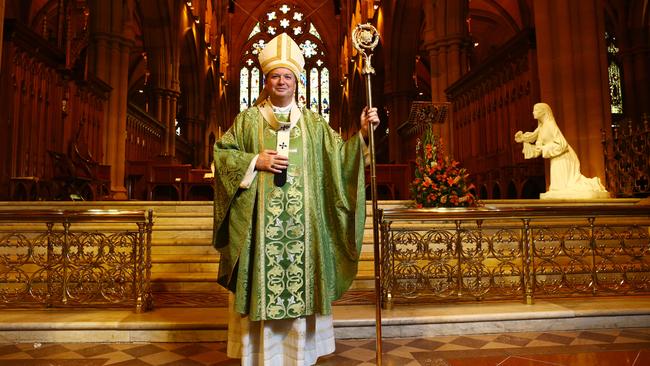Our first people need a blueprint for justice, not a treaty
Don’t let the sometimes bitter contest of ideas defeat the goal of recognition.
By definition, every great opportunity simultaneously is a potential catastrophe. The prospect of profound good is balanced by the danger of that good forgone or even perverted.
The other characteristic of such opportunities is that they build slowly, then come on with a deadly rush. What seemed like a leisurely debate suddenly is the defining moment of decision.
Indigenous recognition is one of our nation’s greatest historic opportunities, and shares both these characteristics.
It can be a triumph of unity or a bitter stand-off. We have been talking about it forever, but with the indigenous constitutional convention meeting in Uluru this month, the moment of truth is upon us.
No one should underestimate the implications of failure. We will have engaged in years of debate, only to conclude languidly, yet again, that our indigenous people still belong in the “too hard” pile. To indigenous people themselves, that sits next to the rubbish basket.
The biggest problem is that the whole issue of recognition is a genuine challenge of ideas, which is nowhere near as much fun as it sounds. I trumpet my solution and rip yours to shreds. You beat me around the head with yours, then force me to eat my own. The result is a whirling confusion of contesting options and counter-options that are almost impossible to organise intelligently and critique. It is combat by constitutional confetti.
The real challenge here is not merely to produce and negate proposals. Rather, the critical task is to produce a valid matrix against which all proposals can be assessed, positively or negatively. Only then is it possible to choose intelligently between the different offerings on the table.
Realistically, any proposal for indigenous recognition must meet four criteria.
First, it must be capable of winning a referendum and the surrounding political debate. The recognition equivalent of a North Korean rocket that explodes on launch, mangling all around it, is too horrible to contemplate.
Second, it must be consistent with the general schema of the Constitution. This is true in the theoretical sense that proposals contrary to our basic constitutional assumptions simply will not work, but also practically because such radical initiatives will be annihilated at a referendum.
Third, any proposal must embody a moral proposition acceptable to indigenous people and the Australian population at large. There is no point pretending this is not a great moral question, and however we answer it must be fundamentally true of ourselves and our nation.
Finally, it is absolutely clear that indigenous Australians want a form of recognition that will promote changes in substance, not form. Recognition should not just sanitise the Constitution but further a process that improves the lives and dignity of indigenous people.
This is the four-part recognition matrix against which all proposals and elements must be judged: practicality, constitutionality, morality and substance. As juries go, this is a tough one, but ruthlessly fair.
Take the issue of whether recognition should embody one or more treaties, a position adopted with great determination and equal sincerity by several indigenous groups. However much one may desire a treaty, it comprehensively fails the matrix.
With its connotations of separate nationhood, it would never pass a referendum or gather majority political support. It has not the slightest historical or theoretical foothold within our constitutional system. Morally, it would a fraud because, no matter how grandly named, this would be no treaty but merely an agreement between government and some of its citizens. In terms of substance, the mere existence of a misnamed treaty would of itself make not the slightest difference to the lives of indigenous people.
The same is true of any attempt to insert a clause against racial discrimination into the Constitution, the so-called one-line bill of rights. This would be torpedoed at referendum like every other attempt to insert rights into the Constitution; cut straight against the grain of the Constitution as an instrument of parliamentary supremacy; and, even if miraculously adopted, leave the improvement of indigenous lives to the unsystematic, expensive and unpredictable course of judicial interpretation.
Then there are notions that it would be possible to put into the text of the Constitution vague preambles expounding all sorts of values and propositions around the position of indigenous people.
Again, none of these will be accepted at referendum, with their prospects of unconfined judicial interpretation. They find no comfortable place in our rule-book Constitution. Any suggestion that they ever would be acceptable knowingly excites false hope; and however pretty, these words would provide no substantial way forward for indigenous people.
But the matrix is not a machine for the systematic destruction of hope. There are numerous options or parts of options that pass its tests with flying colours.
Take the reform of the existing race provisions of the Constitution. Section 25 allows the federal parliament to disqualify members of particular races from voting, while section 51 (26) is a clumsy and ugly provision allowing it to make laws with respect to people of particular races.
There is every realistic prospect that a modern Australian electorate would vote to remove the first and transform the second into a proper power to make laws for indigenous people, a power repeatedly exercised in recent years, mostly to good effect. These are small changes, but real and substantial, subtly and sympathetically moulding our first document in the way it deals with our first peoples.
But sanitisation is not enough. Recognition must carry a moral, symbolic and substantive payload representing a commitment to a shared future of justice and mutual respect. For reasons already canvassed, these broad themes cannot safely be forced into the body of the Constitution, where the width of their language will be an invitation to judicial legislation, while dooming them in any event to referendum defeat.
But there is no reason our nation could not join in a solemn, legislatively enacted declaration of recognition sitting outside the Constitution, but with prodigious moral power.
Appropriately drafted and positioned, such a declaration would be profoundly real: a solemn mutual promise of future respect and fair treatment.
A blueprint for justice.
Were we to ordain such a document, it would make sense that laws affecting indigenous people be systematically considered against its terms, to see if we were honouring our promise to posterity. Why could this process not be undertaken by an indigenous body, preferably itself mentioned in the Constitution? Such a body could not stop, amend or delay a law. It would have no power to veto or overrule. But it could publicly speak truth to power, a value lying at the heart of our parliamentary constitutional system.
Finally, we could choose to understand and accept the real desire that underlies the preference of many Aboriginal people for a “treaty”: that there should be formal, legislatively based agreements between governments and peoples over historic rights and responsibilities.
These are agreements, not treaties, but if this be the desire, so be it.
We should draft them sincerely and solemnly, carefully and respectfully, and call them what they are, not pretend they are something they can never be. But whatever we do, we need to understand that the time for decision is approaching, and that success or failure will be determined by four things. Practicality. Constitutionality. Morality. Substance.
Greg Craven is vice-chancellor of the Australian Catholic University. This article reflects his submission to the Referendum Council.




To join the conversation, please log in. Don't have an account? Register
Join the conversation, you are commenting as Logout